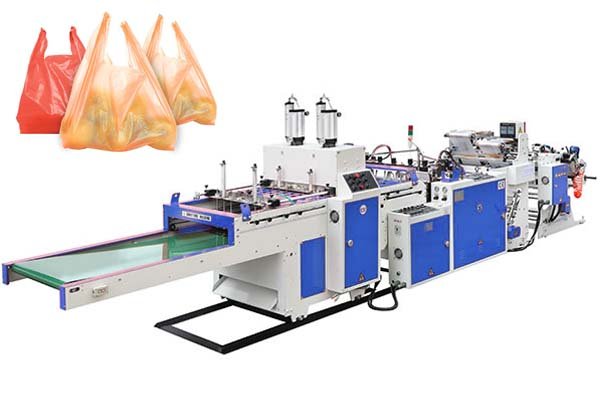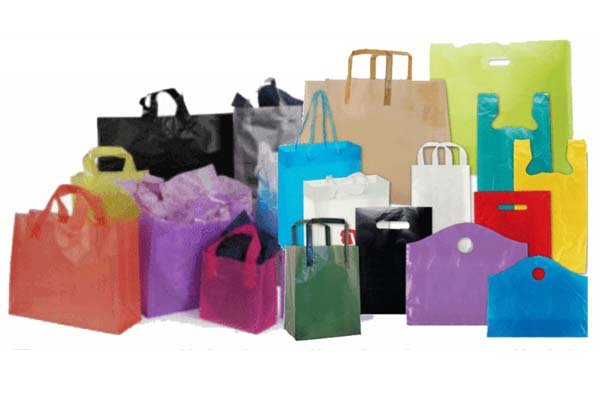
Thinking about investing in a handle bag machine1 but worried it only does one thing? You’re not alone. That’s why we’ve built our machines for maximum flexibility—so you can scale without limits.
Our fully automatic handle bag making machines can produce loop handle bags2, patch handle bags3, and die-cut handle bags4. They’re also capable of making soft loop handle shopping bags.
These machines are essential in retail and promotional packaging because they automate the full cycle: unwinding film, cutting, sealing, and applying handles—all in one streamlined process.
Modular components mean you can swap units to make different bag types. No need to buy a new machine every time your customer needs change. Adaptability is baked into the design.
They’re also material-flexible5—handling LDPE, HDPE, and eco-friendly options like PLA. Precision control systems like our "Smart Tension Control6" make sure even delicate films run smoothly. Switching between sturdy grocery bags and stylish die-cut bags? Easy.
How Does a Loop Handle Bag Making Machine Create the Handles?
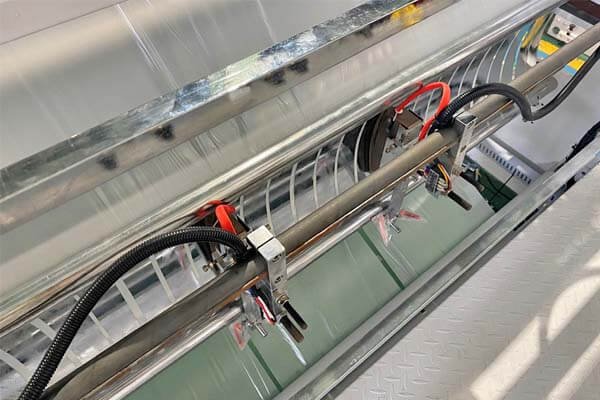
Wondering how loop handles get attached so efficiently? It’s a smart, multi-step process we’ve fine-tuned over years of development.
The machine forms loop handles from a separate film roll, folds them into strips, cuts them to size, and heat-seals or ultrasonically welds them to the bag.
Everything happens in parallel to maintain speed and accuracy.
Inside the Handle Attachment Module
Here’s how the handle gets added—step by step.
Step-by-Step Sealing Process
- Feed Handle Film: A secondary film roll is fed in. Our tension control system prevents stretching.
- Fold & Cut: The film folds into a strong multi-layer strip and is cut to length.
- Precise Positioning: Mechanical arms place the handle exactly on the bag. Laser calibration keeps alignment spot-on.
- Welding: Handles are fused to the bag with your choice of sealing tech.
Heat Sealing vs. Ultrasonic Welding
| Feature | Heat Sealing | Ultrasonic Welding |
|---|---|---|
| Mechanism | Heated bars melt plastic layers | High-frequency vibrations create heat through friction |
| Best For | LDPE/HDPE | Laminates, PLA, thinner films |
| Bond Strength | Strong and durable | Strong with cleaner edges |
| Energy Use | Higher | More efficient |
| BagMec® Advantage | Advanced temp controls for consistency | Ideal for heat-sensitive eco-materials |
What’s the Difference Between a Patch Handle Bag and a Die-Cut Bag?
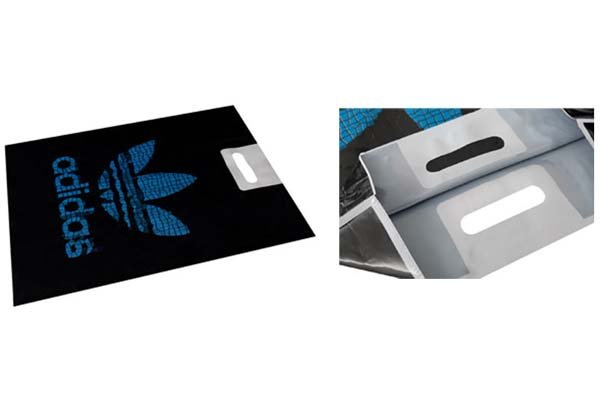
Both are common in stores, but they’re built differently.
A patch handle bag has a reinforcement film welded inside the handle area. A die-cut bag is punched straight through the main film with no reinforcement.
That small difference has a big impact on strength, cost, and usability.
Strength, Cost, and Application
Strength & Durability
- Patch Handle: Handles more weight (5–7 kg). Great for heavier retail items.
- Die-Cut Handle: Best for light goods—clothing, books, giveaways.
Use Cases & Cost
| Bag Type | Typical Use | Material Use | Speed | Price Range |
|---|---|---|---|---|
| Patch Handle | Boutiques, trade shows | More film used | Slower (extra step) | $8,500 – $15,500 |
| Die-Cut Handle | Pharmacies, promos | Less material | Faster | Often part of T-Shirt Bag Machines ($17,000 – $32,000) |
Can One Machine Make Loop, Patch, and Die-Cut Bags?
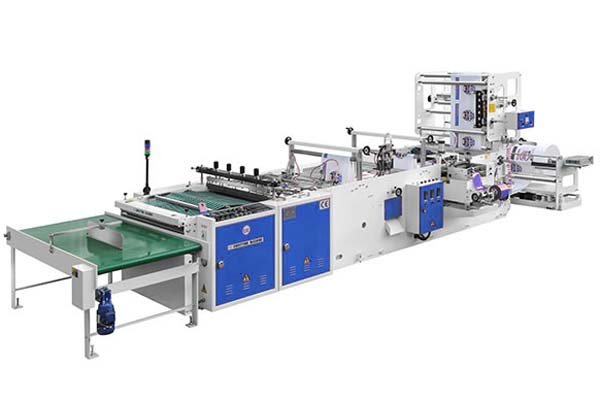
Absolutely.
Our modular handle bag machine1s can be equipped to produce loop, patch, and die-cut bags—all with one core system.
This design lets you evolve with the market without buying a separate machine for every new bag style.
The Power of Modularity
You start with a core frame, then add custom stations.
Handle Modules
- Loop Handle: Includes a film feeder, folder, and welder.
- Patch Handle: Applies reinforcement film before die-cutting.
- Die-Cut: Simple press unit that punches handle shapes.
Switch between stations using the touchscreen PLC.
Changeover Time & Considerations
- Time: 2–4 hours for a full changeover.
- Skill: Basic training required (included with installation).
- Trade-Off: Dedicated machines can be faster for single bag types, but modular gives unmatched flexibility.
Are These Machines Compatible with Eco-Friendly Materials?

Yes—and not just in theory.
Our machines are optimized for PLA, recycled LDPE/HDPE, and other eco-materials.
We’ve partnered with brands to co-develop custom machines specifically for compostable films.
Engineering for Sustainability
Common Challenges
- PLA: Brittle and heat-sensitive. Overheats easily.
- Recycled Films: Inconsistent thickness, impurities.
Our Solutions
| Material | Challenge | BagMec® Tech |
|---|---|---|
| PLA | Narrow heat tolerance | Smart Tension Control + Servo-driven heat regulation |
| Recycled PE | Thickness variation | Reinforced feeders and sealing bars |
| Laminates | Multiple layers | Multi-zone heating + ultrasonic sealing options |
- Smart Tension Control6: Real-time feedback prevents film distortion.
- Energy-Saving Servo Motors: Reduce energy use up to 30%.
- Advanced Temp Control: Holds temperature within ±1°C for perfect seals.
Final Thoughts
A BagMec® fully automatic handle bag machine is a smart, future-proof investment. It adapts to market shifts, supports multiple bag types, and processes sustainable materials with precision. Modular, reliable, and ready for what’s next.
-
Explore the advantages of handle bag machines to understand their flexibility and efficiency in production. ↩ ↩
-
Discover the features and applications of loop handle bags in various industries. ↩
-
Understand the unique characteristics of patch handle bags and their benefits for retail. ↩
-
Find out about die-cut handle bags and their specific applications in packaging. ↩
-
Learn about the importance of material flexibility in producing various bag types. ↩
-
Discover how Smart Tension Control technology enhances precision in bag making. ↩ ↩






